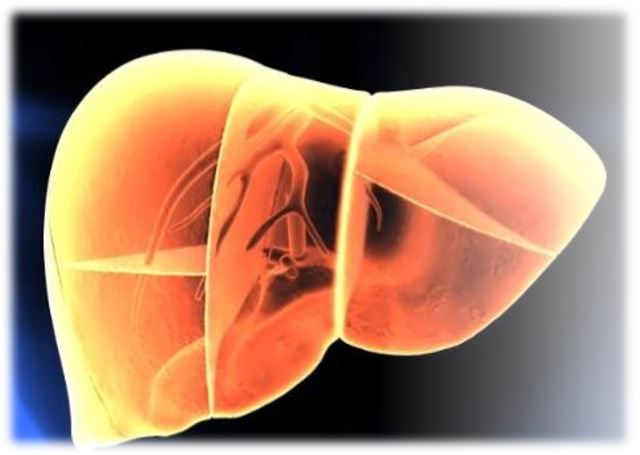- Clinical Technology
- Adult Immunization
- Hepatology
- Pediatric Immunization
- Screening
- Psychiatry
- Allergy
- Women's Health
- Cardiology
- Pediatrics
- Dermatology
- Endocrinology
- Pain Management
- Gastroenterology
- Infectious Disease
- Obesity Medicine
- Rheumatology
- Nephrology
- Neurology
- Pulmonology
SGLT-2 Inhibitors and GLP-1 RAs May Reduce NAFLD Risk in T2D
Use of SGLT2 inhibitor and GLP-1 RA therapy in patients with type 2 diabetes appears to confer hepatic protection when compared with use of DPP-4 inhibitors.
Risk for nonalcoholic fatty liver disease (NAFLD) may be attenuated in patients with type 2 diabetes (T2D) who are being treated with newer classes of antihyperglycemic agents, suggest new data published in Diabetes Care.
Specifically, results from a study of more than 250 000 T2D patients showed a 22% reduction in risk of NAFLD associated with use of sodium-glucose cotransporter-2 (SGLT-2) inhibitors and a 14% reduction in that risk associated with use of glucagon-like peptide-1 receptor agonists (GLP-1 RAs) when each was compared to treatment with dipeptidyl-peptidase-4 (DPP-4) inhibitors.
T2D increases risk for NASH and potentially fatal complications.
(©PIC4U/stock.adobe.com)

Canadian investigators, led by Richeek Pradhan of the Department of Epidemiology, Biostatistics, and Occupational Health at McGill University, suggest a possible reason for the comparatively beneficial effect of the GLP-1 RAs and SGLT-2 inhibitors on hepatic steatosis vs the DPP-4 inhibitors could be the formers’ weight-reducing and anti-inflammatory effects.
The authors cite previous randomized controlled trials that have shown beneficial effects of GLP-1RAs and SGLT2 inhibitors on hepatic fat but note the absence of real-world studies demonstrating an association. Pradhan et al point to the increasing prevalence of liver-related mortality among T2D patients as context for their current study.
Pradhan et al tapped the UK Clinical Practice Research Datalink (CPRD), a population database with clinical records of >50 million patients across >2000 primary care general practices. They assembled 2 new-user active comparator cohorts, the first including new users of GLP-1 RAs and new users of DPP-4 inhibitors who initiated treatment from January 2007 through April 30, 2020. The second cohort included new users of SGLT2is and of DPP-4i inhibitors from January 1, 2013, through April 30, 2020.
For inclusion in either cohort, patients needed to be at least 40 years of age and have at least 1 year of medical history available in the CPRD before entry into the cohort.
Investigators pointed out DPP-4 inhibitors were selected as an active comparator because they do not reduce hepatic steatosis.
GLP-1 RA vs DPP-4 inhibitors. This cohort included 30 291 new GLP-1 RA users and 225 320 new DPP-4 inhibitor users. Before weighting, GLP-1 RA users were younger and more likely to be obese and have microvascular complications than those using DPP-4 inhibitors. There was a total of 2144 NAFLD events recorded during a median follow-up of 1.4 years (IQR, 0.5-3.1).
SGLT2 inhibitor vs DPP-4 inhibitors. In this cohort, there were 41 184 new SGLT2 inhibitor users and 148 421 new DPP-4 inhibitor users. Similar to the first cohort, SGLT2 inhibitor users were found, before weighting, to be younger, more likely to be obese, and less likely to have microvascular complications than those newly using DPP-4 inhibitors. A total of 1507 NAFLD events occurred during a median follow-up of 1.1 years (IQR, 0.5-2.5).
Results
GLP-1 RAs. Pradhan and colleagues’ analyses found that use of GLP-1 RA was associated with a lower incidence of NAFLD when compared with DPP-4 inhibitors, with event rates of 3.9 and 4.6 per 1000 person-years, respectively (HR,0.86 [95% CI, 0.73-1.01]). They found that the association between GLP-1 RAs and NAFLD was not modified by age, sex, use of lipid lowering drugs or by prior use of metformin or thiazolidinediones. Further, among drugs from the class included, exenatide was associated with a significantly lower incidence of NAFLD vs DPP-4 inhibitors.
SGLT2 inhibitors. Treatment with SGLT2 inhibitors also was associated with a reduction in risk of NAFLD compared with DPP-4 inhibitors, with event rates of 5.4 and 7.0 per 1000 person-years, respectively (HR, 0.78 [95% CI, 0.68-0.89]). There was no effect measure modification in this cohort either by age, sex, use of lipid lowering drugs or by prior use of metformin or thiazolidinediones. Analysis of individual drugs found dapagliflozin was associated with significantly reduced risk of NAFLD.
Subcohort analyses. The investigators conducted 2 restricted subcohort analyses, designed to assess the impact of residual confounding and for the possibility that some participants may have had undiagnosed NAFLD. Looking at overall subchort results from both primary cohorts, the authors report that GLP-1RA use was not associated with a decreased risk of NAFLD, but SGLT2 inhibitor use was associated with an 11% reduction in risk of NAFLD (HR, 0.79 [95% CI, 0.64-0.96]). This analysis also found decreased risk of hepatic transaminase elevation of 11% (HR, 0.89 [95% CI, 0.83-0.95]) among GLP-1 RA users and of 34% (HR, 0.66 [95% CI, 0.61-0.71]) among SGLT2 inhibitor users.
“Given the increased risk of all-cause, liver-related, and cardiovascular mortality associated with NAFLD, and the potential irreversibility of its late-stage complications, therapeutic strategies including SGLT2 inhibitors and GLP-1 RA may reduce the burden of NAFLD among patients with type 2 diabetes,” wrote investigators. They added that the observed decrease in risk of elevation in hepatic transaminase enzymes is also a significant finding “given the limited pharmacologic options available to prevent NAFLD.”
Reference: Pradhan R, Yin H, Yu O, Azoulay L. Glucagon-like peptide 1 receptor agonists and sodium-glucose cotransporter 2 inhibitors and risk of nonalcoholic fatty liver disease among patients with type 2 diabetes. Diabetes Care. 2022. dc211953
